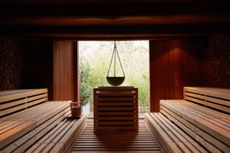Lighting listed properties
Low energy light bulbs are being installed in National Trust houses and other country house owners are being urged to follow suit


The National Trust is today launching a ‘Big Switch’ project to change 40,000 light bulbs across its historic houses, offices, shops, restaurants and holiday cottages to low energy alternatives.
Once installed, the new bulbs will save 2,223 tonnes of carbon per year and will reduce energy and maintenance costs by £431,000 each year. The Trust will plough these savings back into reducing the environmental impact of its properties even further.
Changing light bulbs may sound simple, but there was a particular challenge for the Trust. The first generation of energy efficient light bulbs, called compact fluorescents, produced higher levels of ultraviolet light than incandescents. And while all light is damaging, UV is the most harmful for sensitive materials such as the delicate watercolour paintings, textiles and wallpaper found in many National Trust houses.
There was also the issue of how these bulbs look in a historic setting, an issue shared by many homeowners living in older houses throughout the UK.
'Lighting is really significant for the National Trust, perhaps more than many people appreciate,’ says Katy Lithgow from the Trust.
'Good lighting can help to bring collections alive and can help visitors to enjoy historic interiors. Too much exposure to light, however, is detrimental. Ultraviolet is the most damaging part of light, but happily ultraviolet is not necessary for us to be able to see. If this element is reduced or even eliminated from light sources, the benefits are significant.
'If the Trust can solve the problem of finding low energy lighting solutions in its houses, then the same is probably true for householders across the country.'
Sign up for the Country Life Newsletter
Exquisite houses, the beauty of Nature, and how to get the most from your life, straight to your inbox.
Country Life is unlike any other magazine: the only glossy weekly on the newsstand and the only magazine that has been guest-edited by HRH The King not once, but twice. It is a celebration of modern rural life and all its diverse joys and pleasures — that was first published in Queen Victoria's Diamond Jubilee year. Our eclectic mixture of witty and informative content — from the most up-to-date property news and commentary and a coveted glimpse inside some of the UK's best houses and gardens, to gardening, the arts and interior design, written by experts in their field — still cannot be found in print or online, anywhere else.
-
 How to disconnect from reality and feel like a new person in under 72 hours
How to disconnect from reality and feel like a new person in under 72 hoursOur round-up of the best British retreats that work wellness wonders in under 72 hours.
By Jennifer George Published
-
 Evenley Wood Garden: 'I didn't know a daffodil from a daisy! But being middle-aged, ignorant and obstinate, I persisted'
Evenley Wood Garden: 'I didn't know a daffodil from a daisy! But being middle-aged, ignorant and obstinate, I persisted'When Nicola Taylor took on her plantsman father’s flower-filled woodland, she knew more about horses than trees, but, as Tiffany Daneff discovers, that hasn’t stopped her from making a great success of the garden. Photographs by Clive Nichols.
By Tiffany Daneff Published

